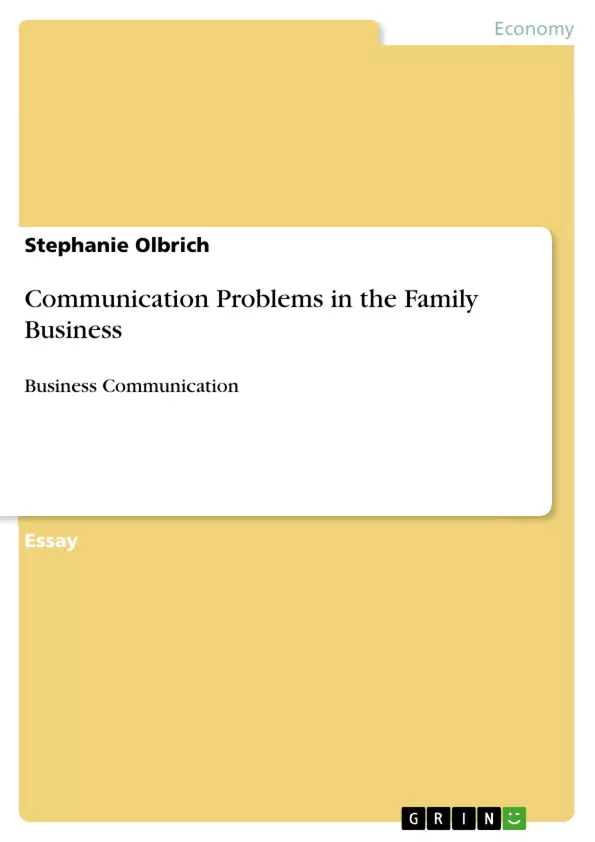For family businesses, effective communication is an even more integral factor for successful business operations due to the peculiarity that personal (family) emotions frequently interfere with business decisions. Family businesses often have to struggle with conflicts among members of the organization, low managerial abilities, interfered daily business activities, and customer relationships that suffer from the lack of structure and poor communication.
The research provided in this paper shows that small family businesses face similar problems, whereas effective communication is the most frequently mentioned issue regarding the need for improvement in family businesses. This paper considers the importance of common expectations and values to guide family members, thereby eliminating areas for dispute. Other important findings are that leadership training and structured responsibilities (clear work roles) make the management more congruent and improve managerial communication; well-managed employees, who have direction and know about priorities, affect business activities positively; and that a professional appearance of the family business has a positive impact on customer relationships.
The conclusion presented at the end of this document states that once the family business has successfully implemented an effective organizational and information communication scheme that includes emphasis on family values, then the business will be able to make use of the particular advantages a family business can have.
- Quote paper
- Stephanie Olbrich (Author), 2010, Communication Problems in the Family Business, Munich, GRIN Verlag, https://www.grin.com/document/162972



